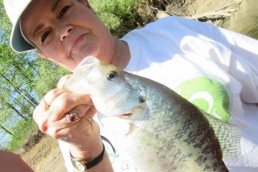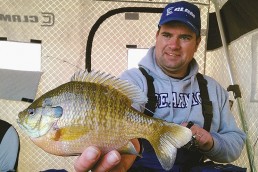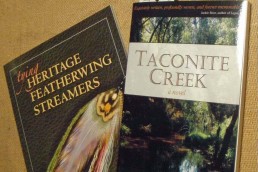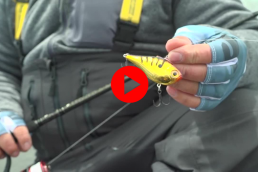Time To Get Outside!
SHARE THIS POST
Here’s hoping that by the time you’re reading this we’ll be, for the most part, past the government shutdowns due to the Covid-19 ordeal, and getting back to normal. At least, as I’m writing this, the lake is not closed! All the state properties are closed, like Wolf and Eagle Creek State Parks and state wildlife areas, but the Corps of Engineer boat ramps are open. They have the fish cleaning stations and restrooms closed, but the ramps are open. Of course, at this point, we don’t know how long all of this is going to last. Let’s hope for the best!
As I’m writing, the lake level stands at 597.80 feet, which is 3.8 feet above winter pool and 1.9 feet below summer pool. I figure, it’ll at least be at summer pool by May. The water temperature is well into the fifties, so fishing should be good for several species the rest of spring.
I’ve not been out much, because I’m still recovering from knee replacement surgery, but the crappie fishing has been good all along. Some nice slabs are being caught this spring. Some may have already spawned by the time this article comes out, but some should still be getting ready to and in shallow water. Some are already being caught in shallow water in some areas of the lake, and they may be done and already moved back out by May.
As I’ve said before, the lake is large enough that the spawning season usually lasts several weeks because the fish don’t all spawn at once. They’ll be up around shallow cover for a while, like lay-downs, brush piles, beaver huts, stumps and rocks. Once they spawn, they scatter and move off the banks and are harder to find.
Largemouth bass spawn around the same water temperatures as crappies and frequently use the same banks and types of cover, so we frequently catch them while fishing with jigs for crappies. If you want to try for them, use the larger bass jigs, plastics (worms, craw-worms, lizards), crankbaits, spinnerbaits and even try jerkbaits or topwater baits. I think the water’s going to be warm enough that any of these baits can work. I use the faster baits to cover water, but then slow down and try slower baits whenever I come to a stump, lay-down or other cover. Something I can get into and work around the cover.
Because several species are active at this time of year, if you want to catch something other than crappies, crankbaits work very well on this lake, I usually start with ones that run 8 to 10 feet deep. You can throw them into shallow water, they’ll bounce on the bottom at first, then dive deeper as the water gets deeper, coming back to the boat. About any of the sport species will hit them and you can cover a lot of water. If there are bass in the area, the more aggressive ones will hit the faster bait. If you determine that bass are in the area, be sure to switch to the slower baits to fish around any cover to maybe find the bigger or less aggressive ones.
Are you enjoying this post?
You can be among the first to get the latest info on where to go, what to use and how to use it!
If you pick up any white bass on the crankbait, then you can switch to the usual white bass baits, like double-rigged twister tails or jigging spoons, depending on what depth you hooked the first ones.
Crankbaits are also excellent baits for catching walleyes on Shelbyville. If you pick up a couple in an area, you can switch to other baits typically used for them if you want to concentrate on them, or just continue to use the crankbaits.
Once the crappie fishing slows down, we use a lot of crankbaits to locate and catch fish; we like to catch fish and are not always particular about what kind. And crankbaits are great for covering a lot of water and locating fish.
The best part is, it’s time to get out and fish for whatever species you prefer. If we’re still under restrictions, the lake is big enough for easy “social distancing.” I hope the big risk is over now and that you’ve all come through it safe and sound!
MWO
SHARE THIS POST
Did you enjoy this post?
You can be among the first to get the latest info on where to go, what to use and how to use it!
Mary Satterfield
Lifelong angler Mary Satterfield is a retired professional bass angler, and has she held titles of National and World Champions and Angler of the Year. She’s run the multispecies Eagle Creek Guide Service on Lake Shelbyville since 1989. She may be contacted at: 217-756-3299.



